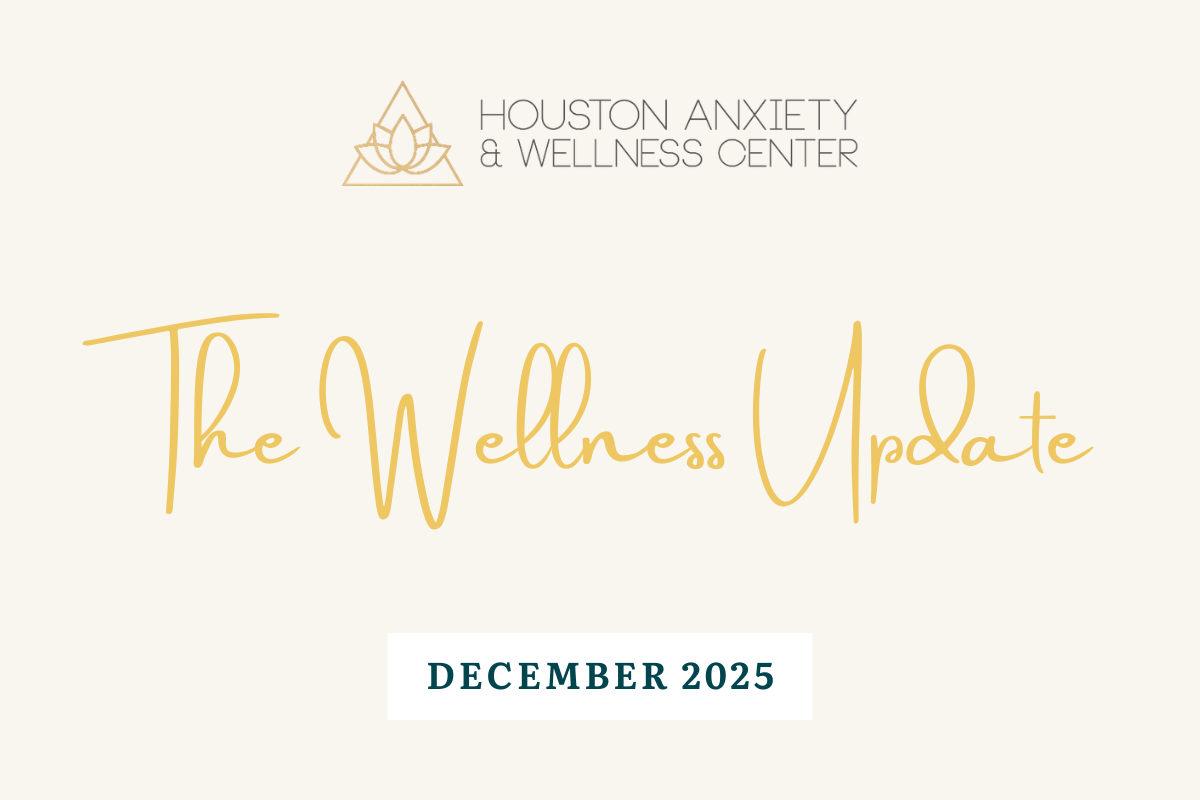
A new morning has started, and your mind is already firing off all the tasks that need to get done: responding to emails, attending meetings, starting or completing projects. Before you’ve even poured your coffee and turned on your computer, your brain is already in overdrive. For some adults, more stress at work is seen as a sign of greater performance and worn like a badge of honor.
But workplace anxiety can take a major toll on our sleep, relationships, motivation, and physical and mental health. And although many people quietly struggle with anxiety at work, very few talk openly about it.
What does Workplace Anxiety Look Like?
Workplace anxiety can show up in different ways:
- Physically: headaches, stomachaches, fatigue, racing heart, sweating, muscle tension
- Behaviorally: procrastination, over-preparing, avoidance, checking emails constantly
- Mentally: constant worry, replaying conversations, catastrophizing small mistakes, difficulty concentrating
- Emotionally: dread, irritability, anxiousness, sadness
The Root of Workplace Anxiety
There are usually multiple factors at play. Often it’s a combination of outside stressors and internal cognitive patterns that amplify anxiety:
- Perfectionism: setting extremely high standards while fearing failure or criticism
- Imposter Syndrome: persistent fear of being a fraud despite evidence of competence
- High or Unclear Expectations: ambiguous job roles or shifting priorities
- Lack of Control/Autonomy: little say in decisions or deadlines can create helplessness
- Work Culture: high pressure, high productivity, and low vulnerability environments
- Burnout: chronic stress without adequate resources or rest
Practical Strategies for Managing Workplace Anxiety
- Ground yourself in the present. Grounding pulls you out of “what if” thinking. Practice a few deep breaths, name 5 things you see/hear/feel around you, use a tactile object (like a pen or stress ball), or listen to a brief guided meditation. These can be done discreetly at your desk.
- Challenge unhelpful thoughts. CBT (Cognitive Behavioral Therapy) techniques help you fact-check anxiety. Pause and ask: “Is this the only way to see this?” You’re not ignoring the thought. You’re examining it with more balanced thinking.
- Break tasks down. Large projects are overwhelming when you’re anxious. Breaking them into small, doable steps creates momentum and reduces decision overload.
- Set healthy boundaries. Communicate your schedule needs. Take breaks. Say no when appropriate. Boundaries protect your work performance, energy, and well-being. They are not selfish; they are necessary.
- Prioritize meaningful self-care. Start the day with something grounding: stretching, a short walk, your favorite coffee, journaling. Prioritize connection and rest outside of work, too.
- Seek professional support when needed. If your workplace anxiety is affecting job performance, relationships, or your health, therapy can help. Therapists at the Houston Anxiety and Wellness Center specialize in evidence-based approaches such as CBT and Acceptance and Commitment Therapy (ACT), which are highly effective for anxiety treatment. We can help you identify triggers, reduce unhelpful thinking patterns, and practice coping skills that lead to long-term change.
Employers Also Play a Role
Employees can take steps to manage anxiety, but organizations also have a responsibility to support emotional wellness if they want healthier performance and retention.
Employers can:
- Encourage open conversations around mental health
- Create flexibility when possible
- Model healthy work-life balance
The Goal Isn’t Zero Stress
Some amount of stress is part of any job. The goal is not to eliminate stress entirely. It’s to build tools to respond to stress more effectively so it doesn’t control you. With support, consistency, and self-compassion, you can feel more confident and grounded at work—one day at a time.
If you or someone you know is struggling with workplace anxiety and wants to regain control, consider reaching out to a therapist at the Houston Anxiety and Wellness Center. You don’t have to navigate this alone. We’re here to help.
Privacy Notice: By providing your email, you understand this resource is educational only and doesn't establish a therapeutic relationship. We use Flodesk (non-HIPAA compliant) to deliver this content and general practice updates. Your email will not be shared with third parties.
A new morning has started, and your mind is already firing off all the tasks that need to get done: responding to emails, attending meetings, starting or completing projects. Before you’ve even poured your coffee and turned on your computer, your brain is already in overdrive. For some adults, more stress at work is seen as a sign of greater performance and worn like a badge of honor.
But workplace anxiety can take a major toll on our sleep, relationships, motivation, and physical and mental health. And although many people quietly struggle with anxiety at work, very few talk openly about it.
What does Workplace Anxiety Look Like?
Workplace anxiety can show up in different ways:
- Physically: headaches, stomachaches, fatigue, racing heart, sweating, muscle tension
- Behaviorally: procrastination, over-preparing, avoidance, checking emails constantly
- Mentally: constant worry, replaying conversations, catastrophizing small mistakes, difficulty concentrating
- Emotionally: dread, irritability, anxiousness, sadness
The Root of Workplace Anxiety
There are usually multiple factors at play. Often it’s a combination of outside stressors and internal cognitive patterns that amplify anxiety:
- Perfectionism: setting extremely high standards while fearing failure or criticism
- Imposter Syndrome: persistent fear of being a fraud despite evidence of competence
- High or Unclear Expectations: ambiguous job roles or shifting priorities
- Lack of Control/Autonomy: little say in decisions or deadlines can create helplessness
- Work Culture: high pressure, high productivity, and low vulnerability environments
- Burnout: chronic stress without adequate resources or rest
Practical Strategies for Managing Workplace Anxiety
- Ground yourself in the present. Grounding pulls you out of “what if” thinking. Practice a few deep breaths, name 5 things you see/hear/feel around you, use a tactile object (like a pen or stress ball), or listen to a brief guided meditation. These can be done discreetly at your desk.
- Challenge unhelpful thoughts. CBT (Cognitive Behavioral Therapy) techniques help you fact-check anxiety. Pause and ask: “Is this the only way to see this?” You’re not ignoring the thought. You’re examining it with more balanced thinking.
- Break tasks down. Large projects are overwhelming when you’re anxious. Breaking them into small, doable steps creates momentum and reduces decision overload.
- Set healthy boundaries. Communicate your schedule needs. Take breaks. Say no when appropriate. Boundaries protect your work performance, energy, and well-being. They are not selfish; they are necessary.
- Prioritize meaningful self-care. Start the day with something grounding: stretching, a short walk, your favorite coffee, journaling. Prioritize connection and rest outside of work, too.
- Seek professional support when needed. If your workplace anxiety is affecting job performance, relationships, or your health, therapy can help. Therapists at the Houston Anxiety and Wellness Center specialize in evidence-based approaches such as CBT and Acceptance and Commitment Therapy (ACT), which are highly effective for anxiety treatment. We can help you identify triggers, reduce unhelpful thinking patterns, and practice coping skills that lead to long-term change.
Employers Also Play a Role
Employees can take steps to manage anxiety, but organizations also have a responsibility to support emotional wellness if they want healthier performance and retention.
Employers can:
- Encourage open conversations around mental health
- Create flexibility when possible
- Model healthy work-life balance
The Goal Isn’t Zero Stress
Some amount of stress is part of any job. The goal is not to eliminate stress entirely. It’s to build tools to respond to stress more effectively so it doesn’t control you. With support, consistency, and self-compassion, you can feel more confident and grounded at work—one day at a time.
If you or someone you know is struggling with workplace anxiety and wants to regain control, consider reaching out to a therapist at the Houston Anxiety and Wellness Center. You don’t have to navigate this alone. We’re here to help.
Recent Posts

Finding Hope in the Mess: A Family Guide to the New Year
Tired of rigid resolutions? Learn the science of hope and use our Family Vision Board Guide to reconnect, regulate, and imagine a meaningful 2026 together.

Create Your Best Year Yet: The Family Vision Board Quick-Start Guide
Reflect, reconnect, and imagine your family's year ahead! Download this simple, meaningful quick-start guide to create your Family Vision Board for 2026.


